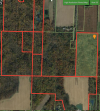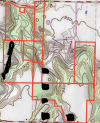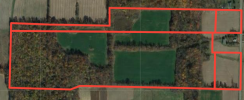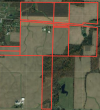greekfreak
5 year old buck +
Hello all, I thought this would be a good topic to get my feet wet. My situation is 2500 acres of private farm in central Ohio. About %40 percent of that is wooded to some degree; the remainder being used for cash crops. On this thread, I thought it would be a cool idea to convey projects that myself, and others have done to balance the income farming with the itch and need to do habitat work. A guy once told me that you could either be a farmer or a die hard deer hunter but there was no in-between.
The extent to our land management has been nothing more than food plots up until about six months ago. We have not created any but have taken grass patches and made them into food plots. With about twelve different properties making up this acreage, there are only three food plots. These were all old grass fields secluded or they would have been put in cash crops lol. The other half of our management has been leaving crops as food plots in the field. Typically, this provides great results. However, some times I get the feeling the deer do not like or care to go to these plots. It has not happened but once or twice. Maybe bad location?
Most recently, in the last six months, I have cut numerous bedding areas and food plots into some of the properties. One of the things our area lacks the most is tall grass. There is absolutely none of that. Jee, only if we had the perfect spot for some nice native grass and shrub plantings! ;)
P.S. I tried to convince father to do some CRP. I get mean looks lol
That was some background for you, I hope to hear of ideas other people have had and utilized or maybe even ideas you think I should try out.
The extent to our land management has been nothing more than food plots up until about six months ago. We have not created any but have taken grass patches and made them into food plots. With about twelve different properties making up this acreage, there are only three food plots. These were all old grass fields secluded or they would have been put in cash crops lol. The other half of our management has been leaving crops as food plots in the field. Typically, this provides great results. However, some times I get the feeling the deer do not like or care to go to these plots. It has not happened but once or twice. Maybe bad location?
Most recently, in the last six months, I have cut numerous bedding areas and food plots into some of the properties. One of the things our area lacks the most is tall grass. There is absolutely none of that. Jee, only if we had the perfect spot for some nice native grass and shrub plantings! ;)
P.S. I tried to convince father to do some CRP. I get mean looks lol
That was some background for you, I hope to hear of ideas other people have had and utilized or maybe even ideas you think I should try out.




